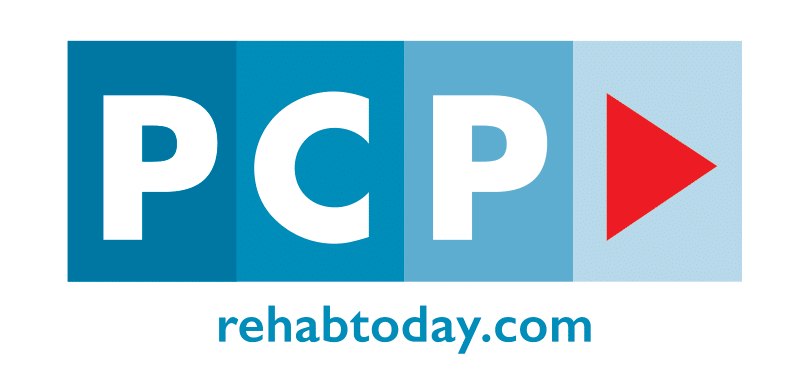Co-codamol has been a trusted friend for many in the pain management world. Co-codamol is a medicine commonly available in tablets and other forms at your local pharmacy or pharmacies. This old favourite has been a staple in the medical community’s toolbox for years, used to treat mild to moderate pain. Its accessibility in pharmacies and as an over-the-counter medicine contributes to its widespread use. But as its popularity has grown so have the worries about it and addiction has come into focus. The risks of co-codamol abuse are serious, get help now.
Key Takeaways on Co Codamol Addiction
Did you know that co-codamol addiction is a growing concern that can deeply affect every aspect of your life? As a prescription drug containing codeine—an opioid known to be highly addictive—co-codamol can quickly lead you into physical dependence, especially when you take it in high doses or for longer than prescribed. If you’re struggling with co-codamol addiction, you might experience a range of withdrawal symptoms, such as restlessness, abdominal cramps, and intense cravings, making it extremely difficult for you to stop taking co-codamol without proper support.
Are you noticing other warning signs? These might include neglecting your personal hygiene, changes in your mood, and prioritizing the drug over your daily responsibilities. The risk of prescription drug addiction increases significantly when you take higher doses and use it for prolonged periods, as your body becomes reliant on the medication to function normally. This dependence can lead you into a vicious cycle where you need more co-codamol to achieve the same effect, further deepening your addiction and making recovery even more challenging.
If you or someone you know is showing symptoms of co-codamol addiction, it’s absolutely crucial that you seek professional help immediately! A medical professional can guide you through safe withdrawal, recommend effective treatment options that work for your specific situation, and provide ongoing support to help you regain control of your life. Remember, co-codamol addiction is a serious condition that shouldn’t be taken lightly, but with the right treatment and support, recovery is definitely possible and within your reach.
Unraveling Co-Codamol: Beyond the Basics

Co-codamol is more than just another painkiller. It’s a combination of two main pain relievers: paracetamol, a household name in pain management, and codeine, an opioid known for its powerful analgesic properties. Other over-the-counter painkillers like aspirin and ibuprofen are also commonly used for reducing pain and are sometimes combined with codeine in other medicines. Codeine is not only used to treat pain but is also used to treat cough (as in cough syrup) and diarrhea, making it a versatile medication. How Co-codamol works is a dual mechanism where paracetamol controls pain by blocking prostaglandins which make nerves more sensitive, and codeine, an opioid, blocks pain signals from getting to the brain, mimicking the body’s natural painkillers. This combination is effective in reducing pain, but while it’s proven to work for pain relief, the risk of addiction, mainly due to the codeine, is a growing problem that can’t be ignored.
The Underlying Mechanics of Highly Addictive Co-Codamol Addiction
To understand co-codamol addiction and pain management we need to look at the pharmacology of co-codamol, the physiological effects it has and how to treat pain with co-codamol and other medications:
-
The Dual Action Mechanism: Co-codamol’s combination of paracetamol and codeine has a dual action for pain control. Paracetamol controls pain by reducing prostaglandins in the brain and codeine, an opioid, acts on the central nervous system to decrease pain. But it’s the euphoric feelings codeine can induce that can be very enticing and some people misuse the medication for recreational use. Codeine is addictive because it is an opiate, and its use can lead to both physical and psychological dependence, especially with long-term or repeated use. Effective pain control often involves taking nonsteroidal anti-inflammatory drugs (NSAIDs) like acetaminophen with codeine or oxycodone elixir and using opioids like morphine and diamorphine.*
-
Physical Dependence: The body’s adaptation to co-codamol can get to a point where it needs the medication for normal functioning and pain control. This dependence is a physiological response where the absence of the medication can cause codeine withdrawal symptoms. These symptoms are the body’s way of telling it needs the medication and can range from mild discomforts like irritability to more severe symptoms like tremors, sweating and intense cravings. Taking codeine repeatedly increases the risk of developing dependence and reinforces the cycle of addiction.*
-
Brain Chemistry Alteration: Opioids like codeine classified as addictive substances can alter the brain’s reward system. With prolonged use the brain can become dependent on co-codamol to release neurotransmitters associated with pleasure and reward like dopamine. This alteration can drive people to seek out the medication compulsively even when they know the harm it can cause leading to codeine addiction.*
Understanding the risks of Co-codamol misuse is key as drug use can lead to physical and psychological addiction and, therefore, professional support for withdrawal and recovery from substances abused. Co-codamol addiction shares similarities with other forms of prescription drug addiction, and similar treatment approaches can be effective across these various forms.
Recognising the Red Flags of Co-Codamol Addiction

Awareness is key to prevention. Recognising the signs of Co-codamol addiction can help you seek help:
-
Dosage Amplification: Taking Co-codamol beyond the recommended dosage is a clear warning sign. Over time you may find yourself taking more to get the same effect, a sign of increasing tolerance and dependence. Co-codamol is highly addictive and medicines containing codeine like Co-codamol have warnings about addiction and advise limited use without medical advice. Also note the difference between codeine abuse and addiction; abuse is the misuse of the drug and addiction is the compulsive need to use it despite harm. Misuse of co-codamol can also cause low blood pressure, which is a serious health risk.
-
Emotional Fluctuations: Addiction brings about big emotional changes. Experiencing mood swings, depression, irritability or even euphoria can be a sign of misuse.
-
Multiple Prescriptions: “Doctor shopping” or getting prescriptions from multiple doctors is a common tactic to get more of the drug than one doctor would prescribe.
-
Withdrawal Symptoms: The body’s reaction to the absence of a substance it has become dependent on can be severe. Symptoms like intense nausea, sweating, tremors, insomnia, anxiety, and headaches when the medication is not taken are clear signs of physical dependence.
-
Drinking alcohol while taking co-codamol is dangerous and can increase the risk of addiction, side effects, and serious health consequences. It is important to avoid alcohol consumption when using this medication.
The Broader Health Implications
Beyond addiction, long term and uncontrolled misuse can have serious health consequences
-
Liver and Kidney Strain: Chronic use, especially in high doses, can harm these vital organs due to the paracetamol component. In large doses codeine can cause feelings of relaxation, drowsiness and confusion but also severe side effects like nausea, itchiness, constipation, rectal bleeding, acute pancreatitis, urinary bladder rupture and adverse pregnancy outcomes.
-
Breathing Difficulties: Opioids including codeine can cause respiratory depression, a life threatening condition if not treated promptly. Misuse can also lower blood pressure and cause abnormal breathing leading to respiratory arrest if taken in higher doses than prescribed. The risk of respiratory depression increases when you use co-codamol regularly.
-
Mental Health Decline: Long term misuse can worsen or cause mental health conditions like anxiety and depression.
Societal Implications and the Bigger Picture
-
- Economic Burden: Addiction leads to job losses, reduced productivity and increased healthcare costs affecting not just individuals but also communities and countries. Prescription drug addiction including addiction to medications like co-codamol and codeine contributes to these rising healthcare costs.
-
Family Dynamics: Families with a member addicted often experience emotional turmoil, strained relationships and financial hardship.
-
Community Challenges: High addiction rates lead to increased crime rates, reduced community participation and decline in societal values.
The Path Forward: Overcoming Co-Codamol Addiction and Withdrawal Symptoms

Understanding the options and steps available might be key to a successful recovery as recovery is a complex journey. Recovery requires effective pain management especially for those coming off prescription painkillers. Non-opioid painkillers like ibuprofen may be recommended as alternatives to manage pain during recovery.
-
Professional Advice: Recognising the problem is the first step. Getting advice from a healthcare professional will give you a clear diagnosis and guidance on what to do next. They can tell you the severity of the addiction and recommend treatment options for moderate and severe pain, and stress the importance of proper pain management in addiction recovery. Getting co-codamol addiction treatment often involves evidence-based treatments, including medical detox and therapy, to support safe withdrawal and long-term recovery.
-
Rehab Facilities: These places offer structured, comprehensive programmes to help you overcome addiction. From detox to therapy sessions, these facilities provide a safe environment where you can focus on your recovery away from triggers.
-
Community Support: Getting involved with support groups can be a game changer. Organisations like Narcotics Anonymous offer emotional support, shared experiences and coping strategies. Hearing from others who have been through the same thing can give you hope and practical advice when you’re in the midst of addiction.
-
Ongoing Therapy: After rehab it’s essential to continue with therapy sessions, whether individual or group. These sessions will address underlying issues that may have led to addiction and provide strategies to prevent relapse.
The Digital Age: Navigating Medication in an Era of Information Overload
There’s a lot of information in this information age we live in but not all of it is useful or true. We should rely on credible, expert-backed sources when taking drugs like Co-codamol. Misinformation can lead to misuse which can be catastrophic. Being informed is a responsibility not just a choice.
Finally
Co-codamol, with its dual-action pain relief mechanism, has transformed pain management
It’s also used for cancer pain, so if co-codamol isn’t working get a doctor for pain relief. However its benefits come with risks, you need to be aware of interactions with other medications and side effects that may occur. Recognising the signs of addiction, understanding the implications and getting help early can make all the difference when taking co-codamol or codeine especially with the precautions needed with their use. As we go through this complex issue we need to approach it with compassion, understanding and a willingness to change for the better whether for mild or severe pain.
Author
-
Dr Otulana is PCP’s longest-serving doctor. He is an experienced Physician with Specialist Interest in Substance Misuse Management and he has a wide range of experience in the assessment and management (including detoxification) of clients with various drug and substance addiction problems. Dr Otulana started practising as a doctor in 2000 and with over 10 years as an Addiction Physician. He is an Advanced Addiction Practitioner Member of Addiction Professionals and also holds the Certificate in Clinical Psychopharmacology (Part 1) of the British Association for Psychopharmacology. He is additionally a strong healthcare services professional with a Master of Business Administration (M.B.A.) degree from Cambridge University Judge Business School.
View all posts








